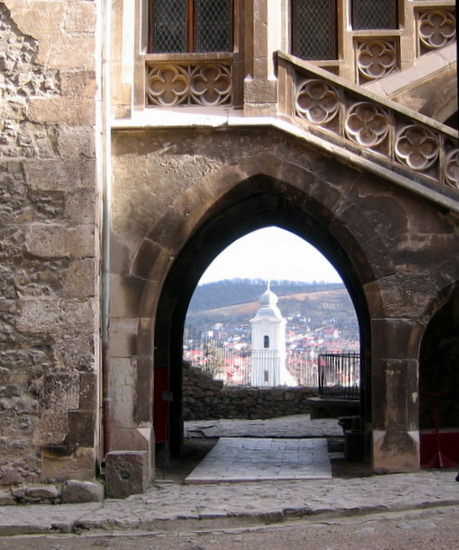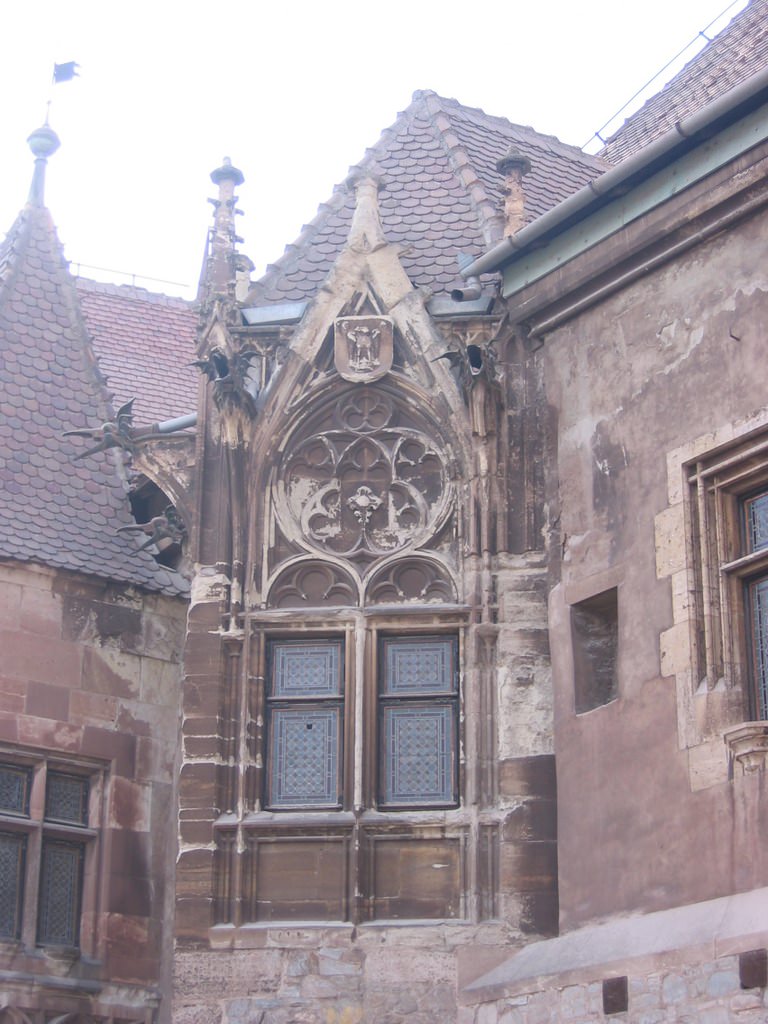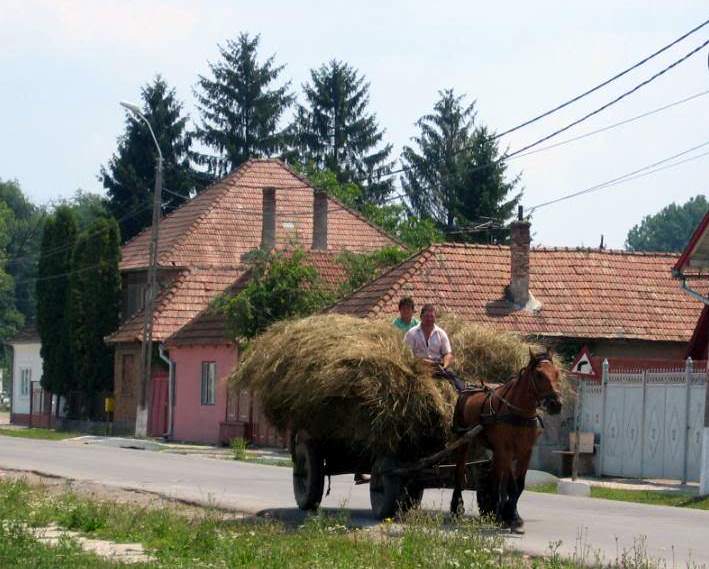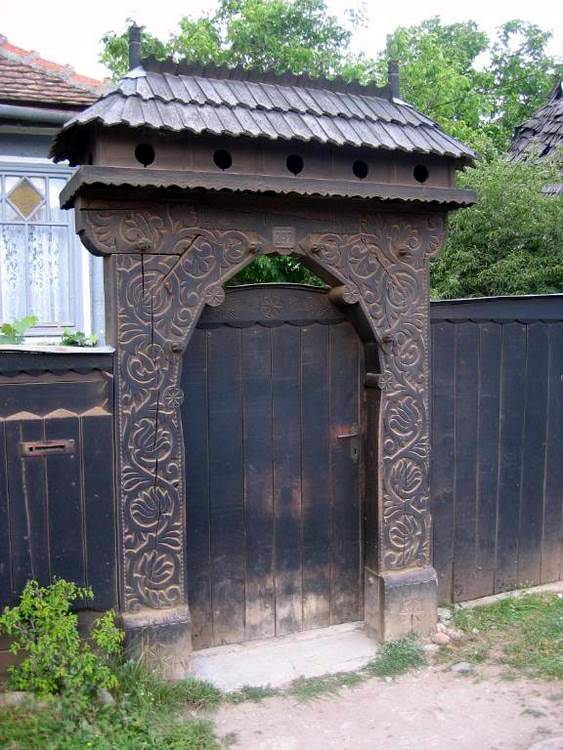Romania is one of the largest and most interesting countries in Eastern Europe. It is blessed with stunning scenery ranging from the forested mountains of Transylvania, through the rolling hills of Moldavia, to the extensive Black Sea coast. It also has many interesting historic cities, as well as colorful villages where age-old traditions are still alive. Several ancient monasteries, castles and mansions remain in excellent condition and are relatively undiscovered by international tourism. Wildlife watchers will find bears, wolves and a wealth of bird life, while wine buffs will be able to acquaint themselves with little-known reds and whites. If there is one aspect of Romania that can make a visit somewhat difficult, it is the infrastructure. There can be temporary power outages, unpredictable internet or phone connections, or interruptions in water supply, and Romania is notorious for its bumpy and potholed roads. However, improvements in all infrastructure is slowly progressing.
Passports & Visas
American, Canadian and EU citizens need to show a passport when entering Romania, but no longer need a visa. A stay of 90 days is allowed. For citizens of other countries, tourist visas can be purchased from the nearest Romanian embassy and will also allow for a 90-day stay.
Obtaining a US passport
The US Government Website is where to start.
General Information
Currency and Money
Romania’s money is counted in new lei (the singular is one leu), internationally abbreviated to RON. This is different from old lei (ROL), a currency that was phased out starting in 2005. Currently, there are three new lei to one dollar. Since the new leu is equivalent to 10,000 old ones, people still sometimes talk in thousands of old lei – for example, a price that is actually three new lei is expressed as “thirty” because it would have been 30,000. This is not a deliberate attempt to confuse, but can have that effect. Likewise, if a hotel room rate is cited in millions, it is really hundreds of the new currency.
Many restaurants and hotels in large Romanian towns accept the well-known credit cards. ATMs, which were practically non-existent up until the 90s, have multiplied fast and can easily be located in major settlements. However, make sure you have enough cash before visiting more rural places, where there is no guarantee of finding an ATM or an establishment that accepts credit cards.
The best place to change money without being swindled is at a bank.
Driving in Romania
Romania’s biggest roads have names beginning with E or DN, followed by a number. “E” means the road is part of a European network, and these are the best roads: broad, and with acceptable surfaces. When road surfaces are damaged, for example by frost, it is these roads that get repaired first.
When driving on secondary roads, you might find occasional potholes. Also watch out for farm or wild animals or horse-drawn carts. Another risk of driving on country roads is the occasional big truck thundering down what can be quite narrow lanes. If driving in the late afternoon through a village, you might get caught behind cows ambling home from grazing. Road surfaces can be rather bad within cities, with holes and insufficient lighting. The maximum speed in a built up area is 50 km/h, while elsewhere it is 90 km/h, rising to 130 km/h on a major intercity road.
Wearing of seatbelts in front seats is compulsory everywhere in Romania, although before 2006, it was only required when outside a city or town. Local motorists do not always obey the rule.
The road-sign system is the standard European one. Like everywhere else in mainland Europe and in the US, motorists drive on the right side of the road. Romanians can be aggressive drivers, speeding or overtaking even on a blind corner. You must have your headlights on at all times, unless your car is registered in the county you are in. This is for safety, so you can see and be seen in unfamiliar territory.
If a traffic cop stops you for any road rule violation, the cop can give you a ticket, but cannot require you to pay a fine on the spot. That does not mean that he is necessarily seeking a bribe if he asks, however. As of 2006, police officers are able to collect fines personally, but you can refuse to pay and be given a ticket instead. At least one-half of the fine amount must be paid within two working days.
If your car has GPS, it is a good idea to buy the Romanian map to add to it, in order to have all the details which the standard issue European map might not have. You can buy this for about 100 RON at a computer or mobile phone store. Ask for “Harta Romaniei pentru GPS” – although you won’t need to say this at a GSM store, as staff are likely to speak English.
If driving the cratered Romanian roads sounds just too daunting, consider cycling instead. In fact, Romania might just be the ideal mountain-biking country.
Electricity in Romania
Romania’s electric grid is 230 volts A.C. Plugs have two cylindrical pins. You will need an adapter if you arrive from outside mainland Europe.
Emergency Numbers
The free emergency number for all services is 112. It is slightly slower than the paid ones, as it has an operator to filter out pranksters. The paid emergency numbers are 961 for ambulance, 981 for fire, 955 for police and 987 for “gendarmerie” – the military police in cities. Wily locals say it is best to call the fire number, 981, in case of an accident, as they have better equipment and vehicles, including helicopters and superior ambulances.
Etiquette in Romania
On a first meeting with someone of either sex, expect to shake hands. Men who already know each other will continue to shake hands each time they meet. A kiss on each cheek is also a customary greeting between people who know each other fairly well – whether they are two women, a man and woman, or, more rarely, two men.
Dress codes are not much different from that in western countries, except, perhaps, more permissive. There is not much of a taboo about wearing skimpy clothes on the street, particularly in the sweltering Romanian summer.
If you give flowers to someone, make sure the bouquet contains an odd number.
Locals will be flattered if you try to speak a little of their language, which is very similar to Italian but with a certain Slavic influence. However, this is not expected, and Romanians – perhaps the best linguists in Eastern Europe – very often speak English. If you are a man and someone calls you “mister,” they are not intentionally being impolite – they are mentally translating “domnul,” which is a courteous way of addressing a man in Romanian.
Small towns or villages will often have a “birt” – the colloquial word for the main social gathering place where people drink beer and talk. In very small villages, this might simply be the general store, which doubles as a pub. If you cannot find a professional guide or driver or a place to stay, a conversation struck up here (locals will always be interested to meet a foreigner) can be a place to fix up something informally. The other social center in very small localities, where everybody meets each other, is the church.
Romania is a great wine-growing country, though the drink does not have the social caché that it has in the west. In fact, if anything, beer is the drink preferred in social gatherings, while wine is consumed usually at home – or if at larger gatherings, only on special occasions.
Many Romanians feel very strongly about politics, religion, social mores, and relations with other nations. Expect to hear a wide variety of views, quite liberally expressed and not hindered by any sense of political correctness.
Smoking is very common in Romania. There is no legal requirement for restaurants to have a section for non-smokers, and a lot of them do not.
Time Zone
Romania is in the East European Time zone. There is also a daylight saving time, with clocks moving an hour forward in April and going back again in September.
Tipping in Romania
A tip is not quite as much of an expected courtesy here as in the US. If you get shoddy service, do not tip. Sadly, negligent or even haughty treatment of customers is fairly common in Romanian stores, restaurants and museums. A sense of imprisonment can begin to set in when visiting a restaurant, as the staff take just a little bit more than an acceptable amount of time over each step of serving you. Equally frequent, though, you may be surprised by effusive warmth and charm that you would rarely encounter in the west. Oddly, the most courteous and helpful staffers are not necessarily those who work in the “fanciest” places; they can often be obsessed with the right way to do something, or casually resentful of the relative wealth of their customers.
A 10% tip would be quite normal for waiters or other people who do provide good service. Rather than leaving the tip on the table, tell them when handing over the money that you wish to round the amount up to a certain number.
Weather in Romania
Romania has a continental climate, meaning that summer highs and winter lows can be fairly extreme. Snow is usual in winter, while August days can be unbearably sweltering. In Bucharest, the typical range throughout the year is from 23 to 84 degrees Fahrenheit.
Getting Around
Air travel in Romania
Romania’s main airline, Tarom, connects Bucharest to many international cities, as do a lot of foreign airlines. You can fly from Bucharest to various provincial Romanian cities using the airlines Tarom, Blue Air or Carpatair. If you want to bypass Bucharest entirely because your trip is focused on the provinces, you can get direct flights to several secondary Romanian cities from Germany, Hungary, Austria or Italy through airlines including Lufthansa, Austrian and Malev.
Rail Travel in Romania
The fastest trains, which link major cities in Romania, are called Intercity and are also the most comfortable. These are not as swift as the high-speed rail links found in some other European countries, though. The speed of trains in Romania is partly impacted by the quality of tracks; rail modernization has been gradually starting in recent years.
A bit slower than Intercity are the Rapid and Accelerat trains, which have more stops and are slightly less comfortable. As you progress through Personal, Accelerat, Rapid and Intercity, the trains have progressively better conditions, including more space between seats and more space for each person to sit.
With any type of train, it’s wise to not just buy a ticket – which entitles you to travel on a certain route – but to also get a reserved seat on a particular train. Buy a ticket in the station from which you will leave, and if it’s a long trip, consider buying it several days in advance.
If you are traveling overnight, try getting a bed on the train. Ask for the sleeping car or “vagon de dormit.” The choice is often between a six-bed, a three-bed, or a two-bed compartment, getting steadily more comfortable in that order. It’s usually only a few dozen dollars to get a two-bed place. If you enter Romania by train, even if coming from a fellow EU member state, the train will stop on both sides of the frontier for passport inspection.
The rock-bottom type of train, Personal, is best used only for quick trips to outlying towns. It is slow and not so clean. Sometimes the train is longer than the platform, so it is a good idea to be seated toward the front. That way, you’ll see the town name on the station platform, and you will not miss your stop.
At stations, it is always easy to find a given line number, as they are counted away from the main station building – the closest track to that building is always Linia 1. The numbers are actually the number of the train line itself – not that of platform you stand on. Platforms are generally located between each line, and you get on and off the train using the platform on the “near side” of the train, i.e. the side nearest the station building.
When consulting a timetable at a train station to find the train you need, note that only the end station is shown, not the intermediate ones. If you want to be a really well informed traveler, buy the book called “Mersul Trenurilor,” which is for sale at major train stations. It’s the complete Romanian train timetable.
Car Rentals in Romania
In most major Romanian cities, you can rent a car from an international or local company. If you consult Sapte Zile – a free entertainment magazine that has local versions in different places all around the country – you are sure to find rental car ads. It’s a good idea to rent from a company that has representation in more than one city, in case you have an auto break-down. Rodna Trans and Car-N-Go are reputable Romanian rental car companies.
Given the bumpy roads in Romania, it’s a good idea to rent a car that absorbs shocks well and has low fuel consumption, such as a Ford Mondeo. Renting a car could cost between 75 to 100 dollars a day. The daily rate is cheaper if you have the car for at least three days.
You may well be able to rent a driver as well as a car, for an extra 25 or 30 dollars a day. This person will be able to give you some basic guidance on where you are going, if not comprehensive tourist information. The younger your driver is, the more likely they will speak English.
Taxis in Romania
Do not take a taxi that does not have the company’s name on its side. Inside the taxi, look for the meter where you can see your fare climbing – if it isn’t there, find a different cab.
Using a taxi can be a good way not only to get around within a city, but also to get from town to town. The price can be quite reasonable, especially if negotiated for a party of several people. If you have a good experience with one driver within a city, it’s worth trying to broker a deal with him on trips further afield.
Some hotels have relationships with taxi drivers or companies to whom they refer guests. However, this is not common. Watch out for “shark” drivers who exploit foreigners by overcharging. They will often be hanging around near train stations, and will walk up to people and ask, “taxi?” Their cars are often marked simply, “taxi,” with no company name. As a general rule, do not ride with any driver who comes up to you offering a ride – seek out a car that looks legit.
Health
You do not need any special vaccinations when visiting Romania. International agreements with the US, Canada, UK and Australia mean that these countries’ citizens can use Romanian emergency medical services. Romanian tap water is safe to drink. Tourists who prefer not to do so, however, will have no difficulty finding high-quality and cheap mineral water for sale.
Personal Medications
You must declare any drugs or chemicals you bring into the country.
Lodging
Bucharest has a wealth of hotels at every level of luxury – here are our recommendations on where to stay in Bucharest. All major cities will have something at least in the four-star category. If you are looking for something cheaper, it may be more pleasant to stay at a bed-and-breakfast than a mid-level hotel. If you are looking for a rural guesthouse or farmhouse to stay at, contact ANTREC, a state-owned agency with a full database of such options. Rural hotels are ranked with a number of daisies, instead of stars.
Romanian hotels sometimes have less attentive staff in summer because the good workers go to western countries, such as Italy, to work during high season. But increasingly, the good hotels make it part of their employees’ contracts that they will not disappear in the summer months. When you check into a hotel, you need to fill out a form that asks your date of birth, where you were born, your home address and your passport number. As strange as it may seem, hotels really are required to obtain this information. Police officers sometimes conduct spot checks to ascertain whether the hotel has a full record of all its guests.
Main Sights
Bucharest, the capital city, is an expansive and bustling metropolis with many good restaurants and hotels. Its top attractions include the Village Museum, which contains replicas of peasant homes from around the country, and the Parliament Palace, a grandiose communist-era construction that is one of the world’s biggest buildings.
Unique landscapes and a plethora of wildlife can be seen at the Danube delta, where the great river joins the Black Sea. In Bucovina, a northeastern region, you can visit medieval monasteries whose churches are painted, inside and out, with vivid depictions of Biblical scenes and the lives of the saints. A sumptuous palace of the former Romanian royal family can be visited at Sinaia. And the large region of Transylvania offers evocative mountains and forests, Baroque mansions, Renaissance castles, and pleasant major cities such as Cluj and Brasov.
Public Holidays
New Year: January 1 and 2
Easter: a date in April or May calculated according to the Eastern Orthodox calendar
Pentecost and Whit Monday: the 50th and 51st days after Easter
Labor Day: May 1
Dormition: August 15
Union Day: December 1
Christmas: December 25 and 26
Public Hours
Banks and post offices keep normal business hours, but many stores and kiosks selling food or other commodities are open very early or late – often around-the-clock. Sometimes they display a sign saying “non-stop,” as this English phrase has entered the local language to mean that something is open 24 hours. The city of Cluj even has a shopping mall named Sora that never closes.
Museums are usually closed on Mondays.
Safety
Walking the streets of Romanian cities, even in the evening, is not as dangerous as it could be in some American or West European cities. Provided you avoid peripheral parts of town or areas around train stations after dark, there is little risk of street crimes such as mugging. However, pickpockets do hover in larger cities and tourist destinations. A tourist can often be ripped off by unofficial money changers or by people overcharging for inadequate service.
Women may find themselves being the object of lascivious stares or leers from some local men, who apparently find foreign women particularly worth looking at. Foreigners may also find that street beggars pay them more attention than locals.
Romanian law requires everyone – local or foreign – to always carry identification documentation in public. Before you step out, ensure you have your passport on you. Show it only to uniformed officers. If any official apprehends you, remember that fines never need to be paid right there and then. Never hand cash to an official personally.
Telephones
It is usually possible to connect your foreign mobile phone to a Romanian network. If you want to use a phone booth, you need to buy a magnetic card from a post office or news stand. A phone card is “cartela telefonica,” and add “Romtelecom” to indicate you need a card for fixed-line public phones, not a cellphone. The cards come in several price denominations.
Dialing Procedures
If you are calling a Romanian number from outside the country, use the country code +40, and then omit the zero that is the first digit of the area code. When calling between towns within Romania, use that area code, including the first zero.
Useful Country Codes:
USA and Canada 1
UK 44
Returning to the US
You cannot carry more than $10,000 when either entering or leaving Romania. Goods taken in or out of the country should be declared. When leaving the country, that includes goods of cultural, historic or artistic character.









director-turism
Sunday 8th of January 2012
Very accurate and detailed data contained in the text. Congratulations to the author.
Foarte exacte si detaliate datele cuprinse in text. Felicitari autorului.